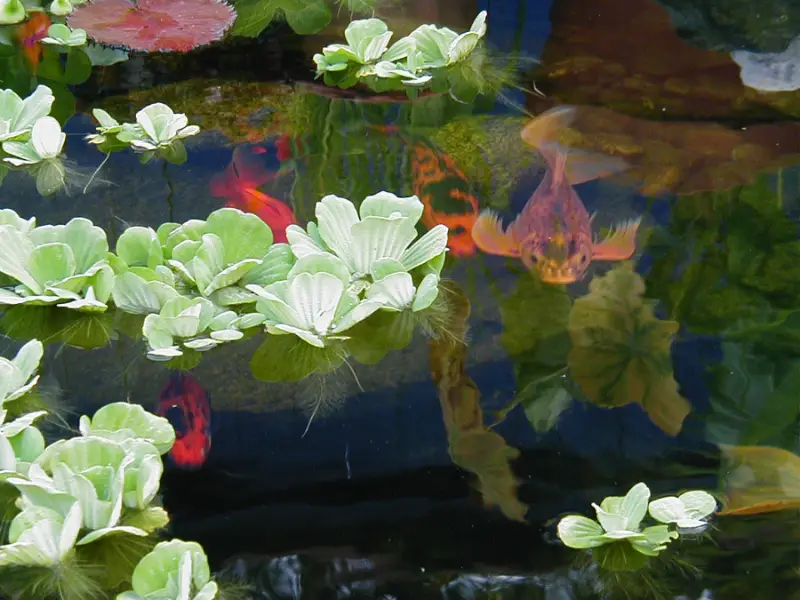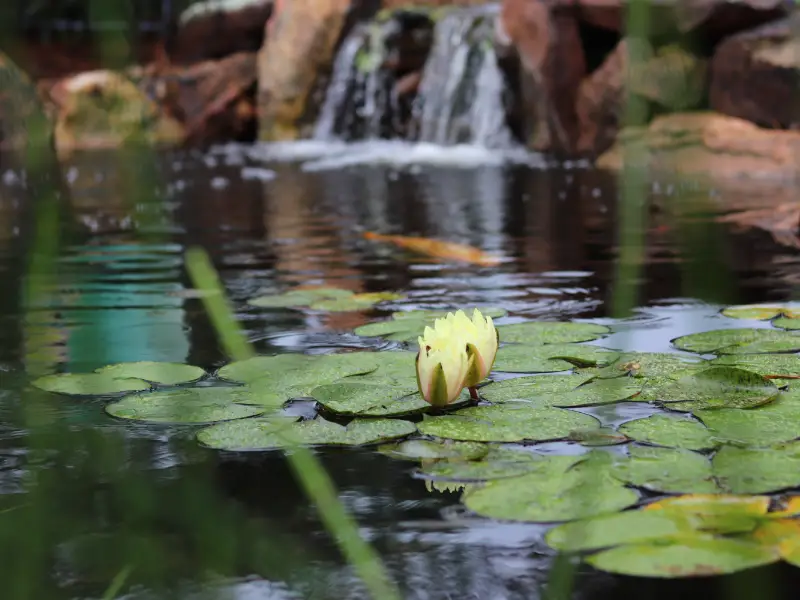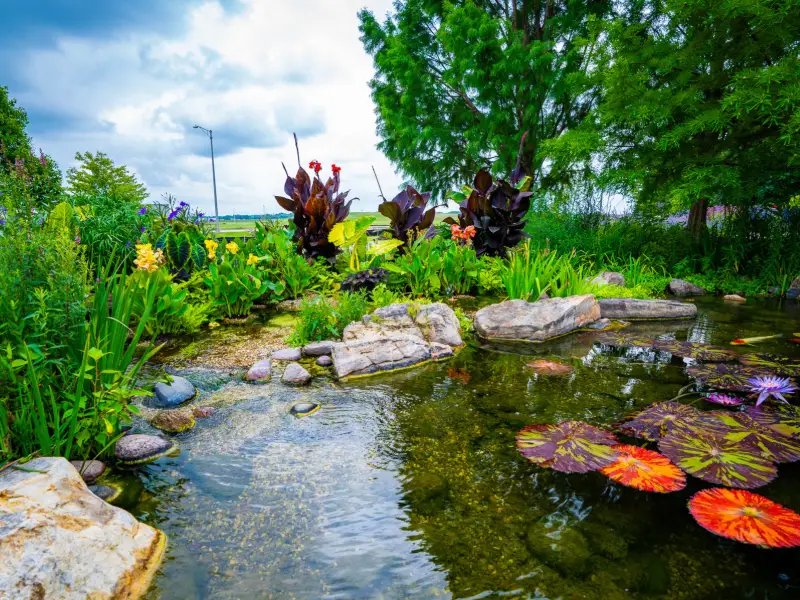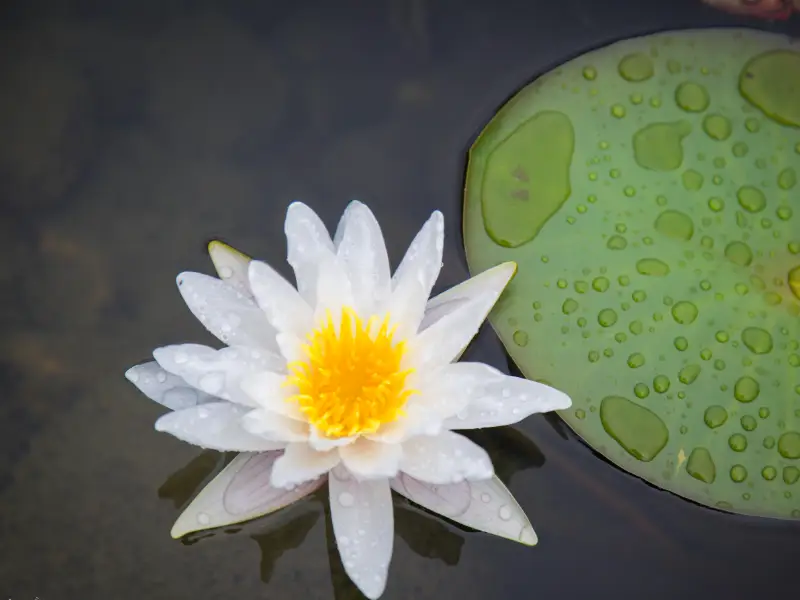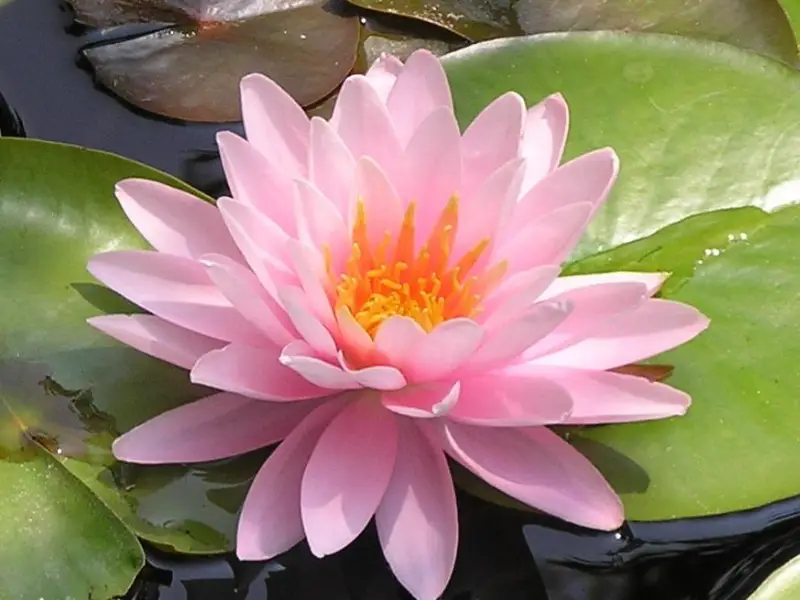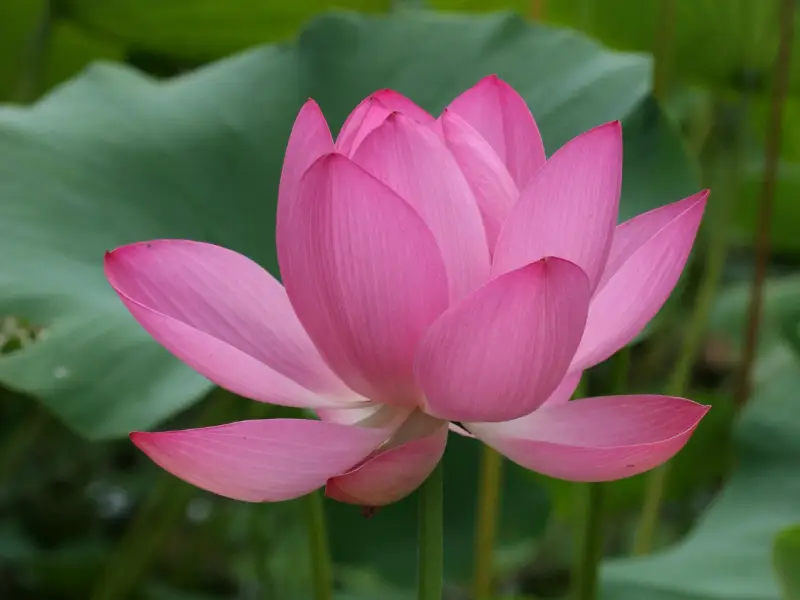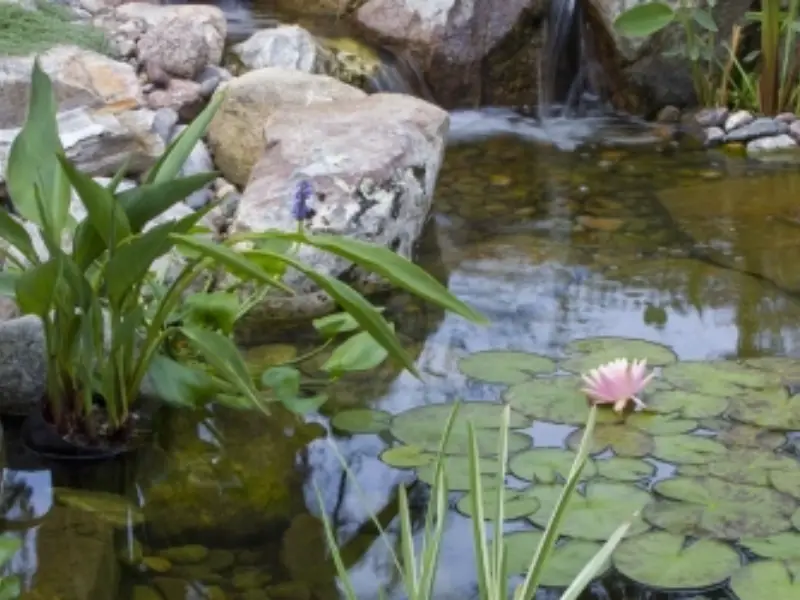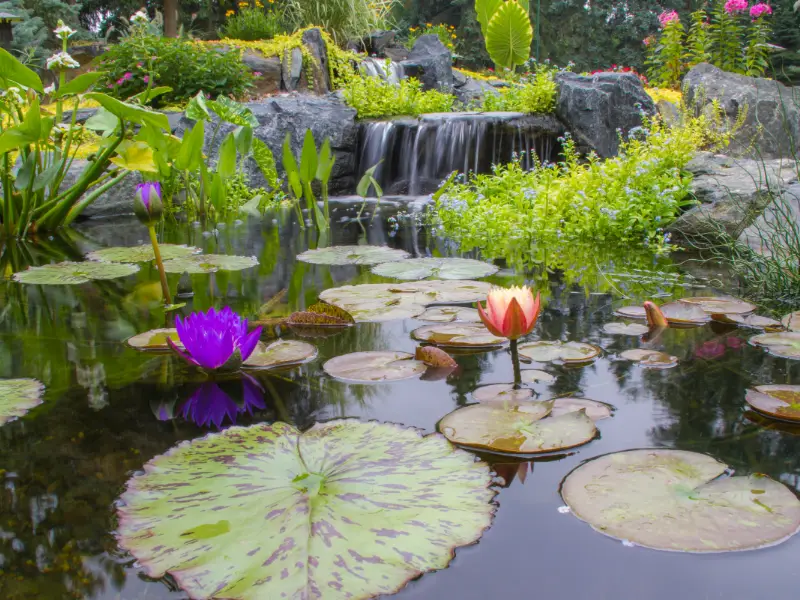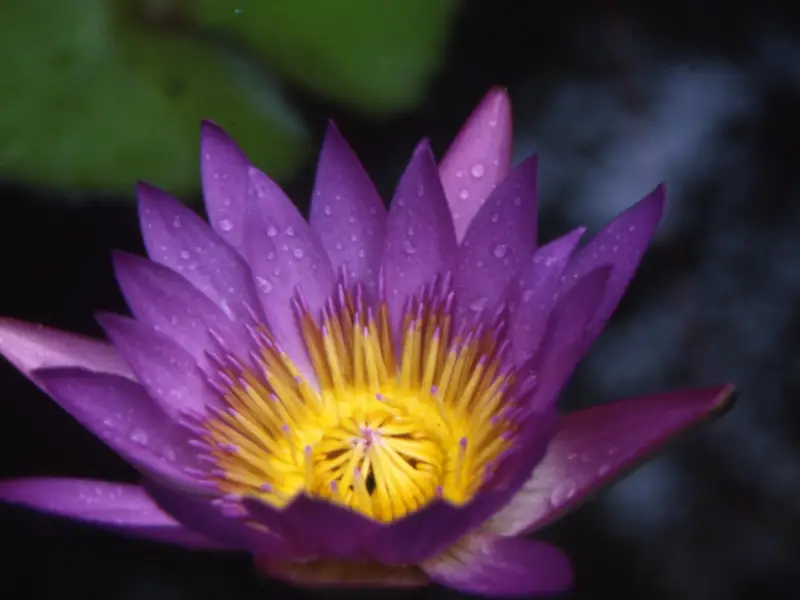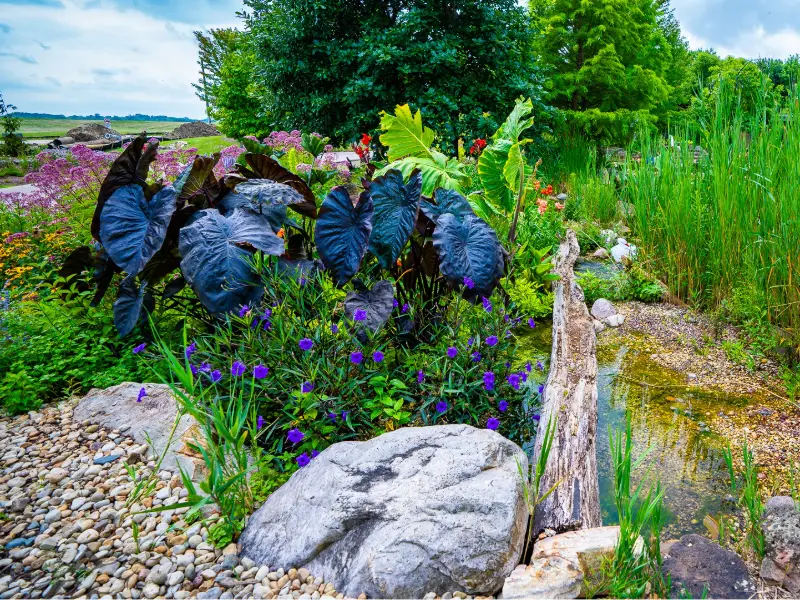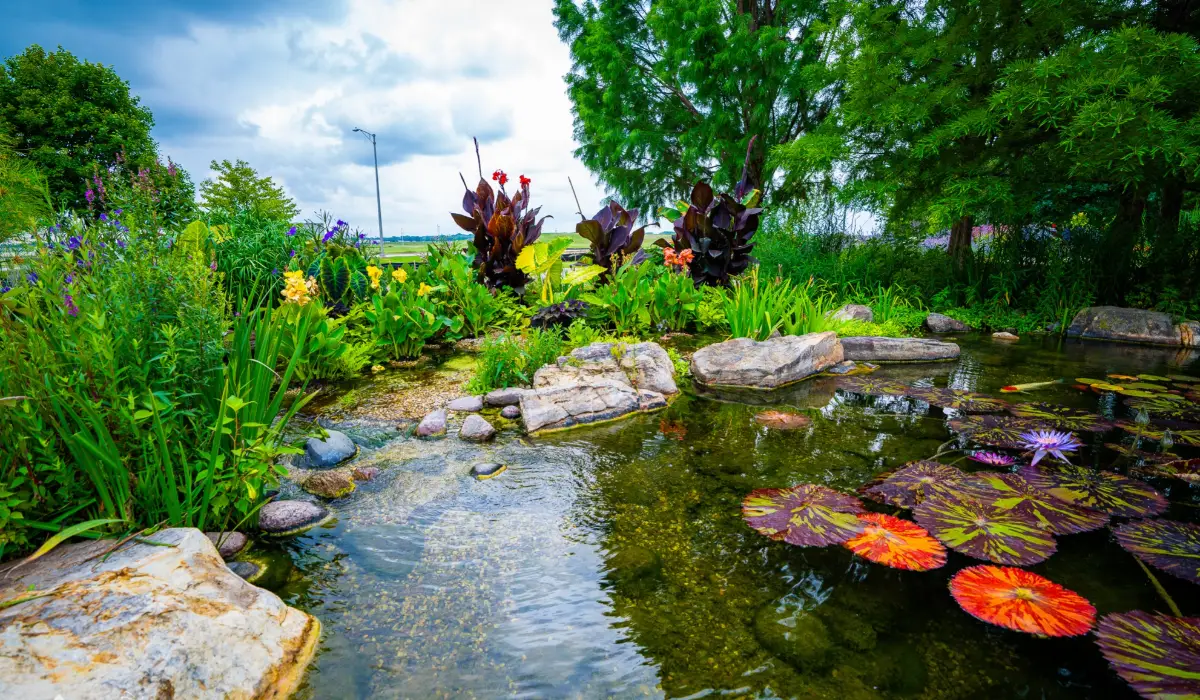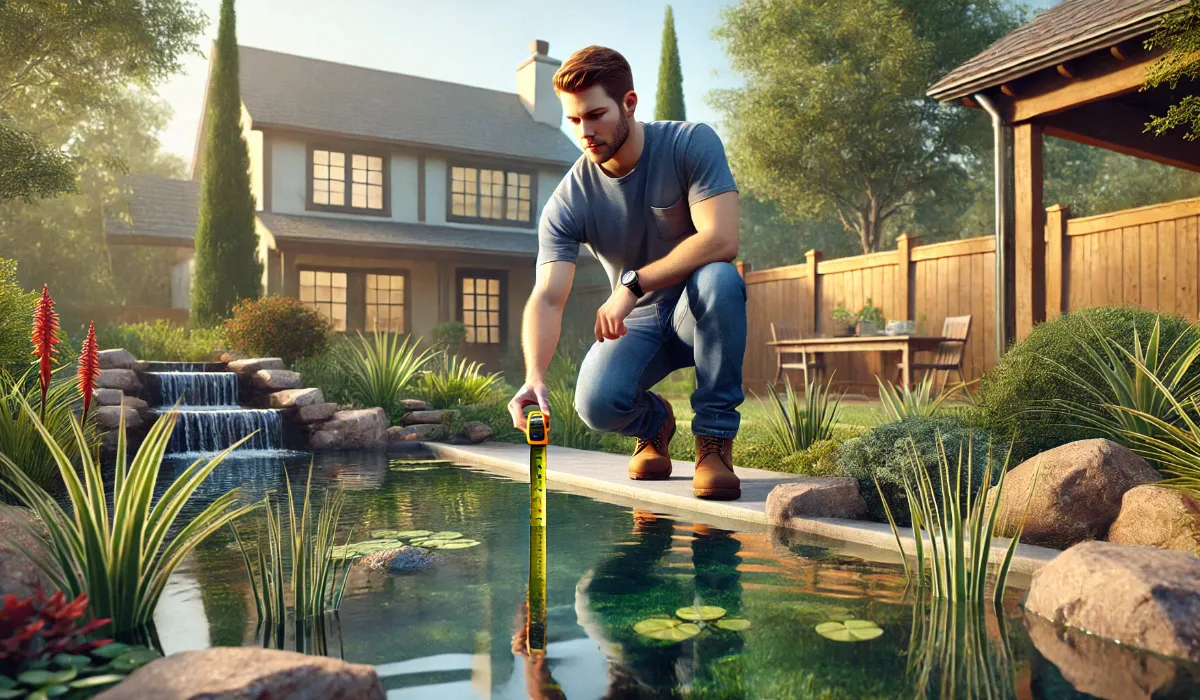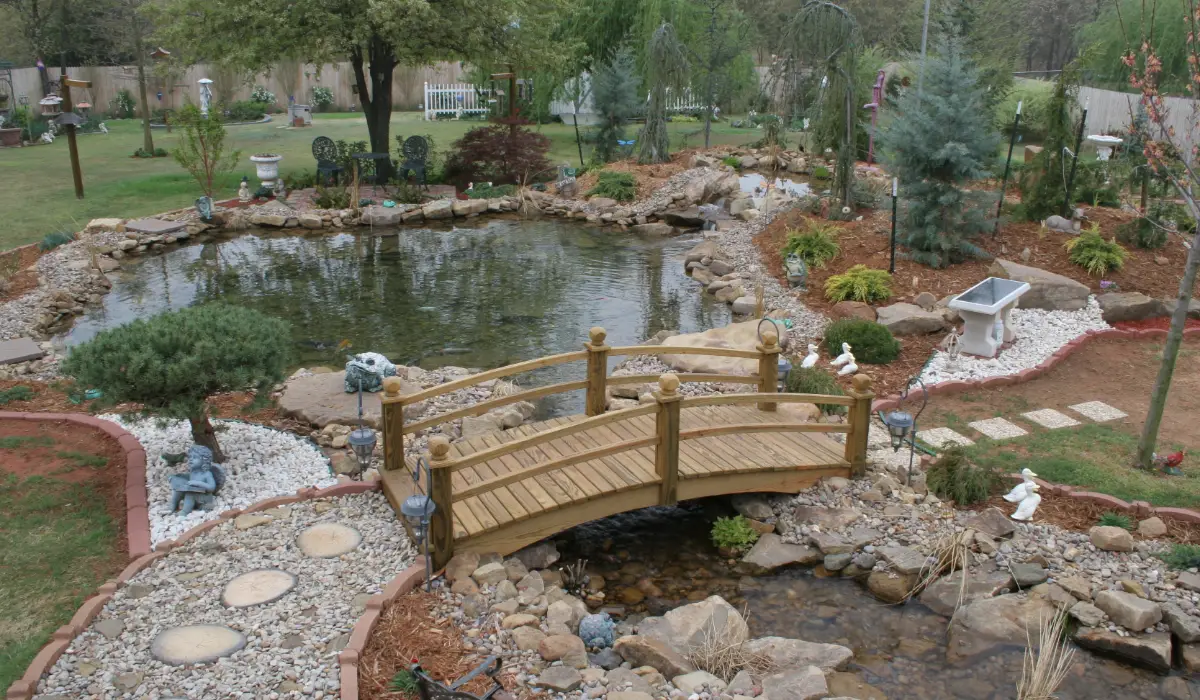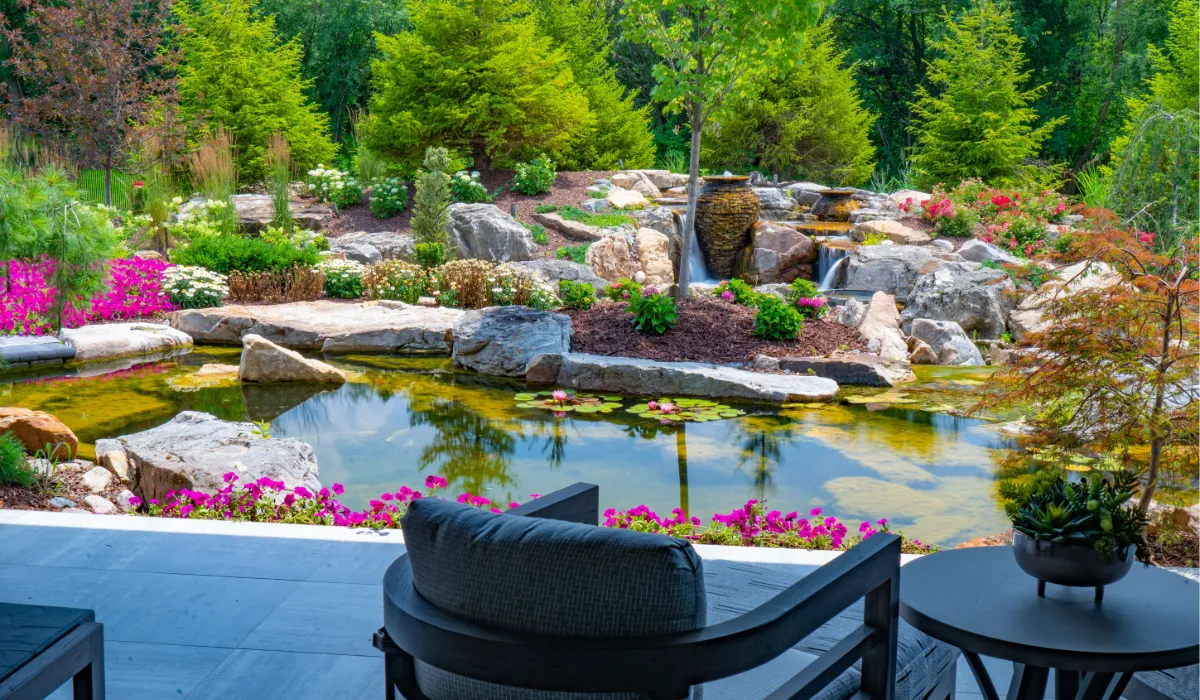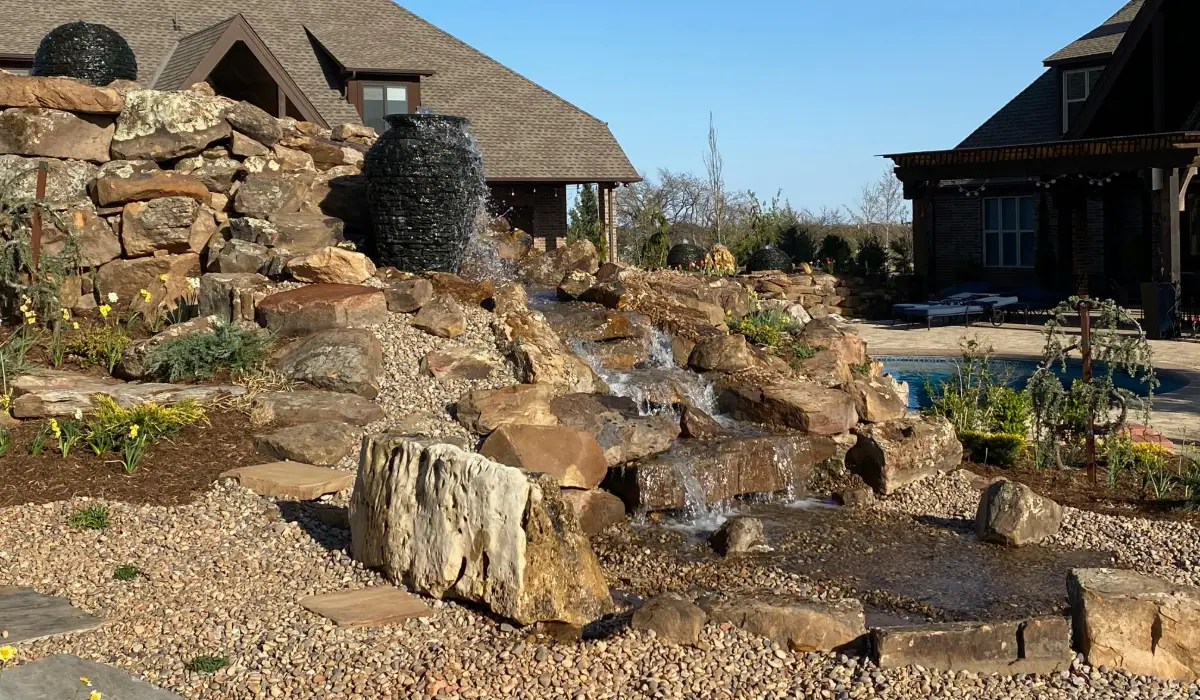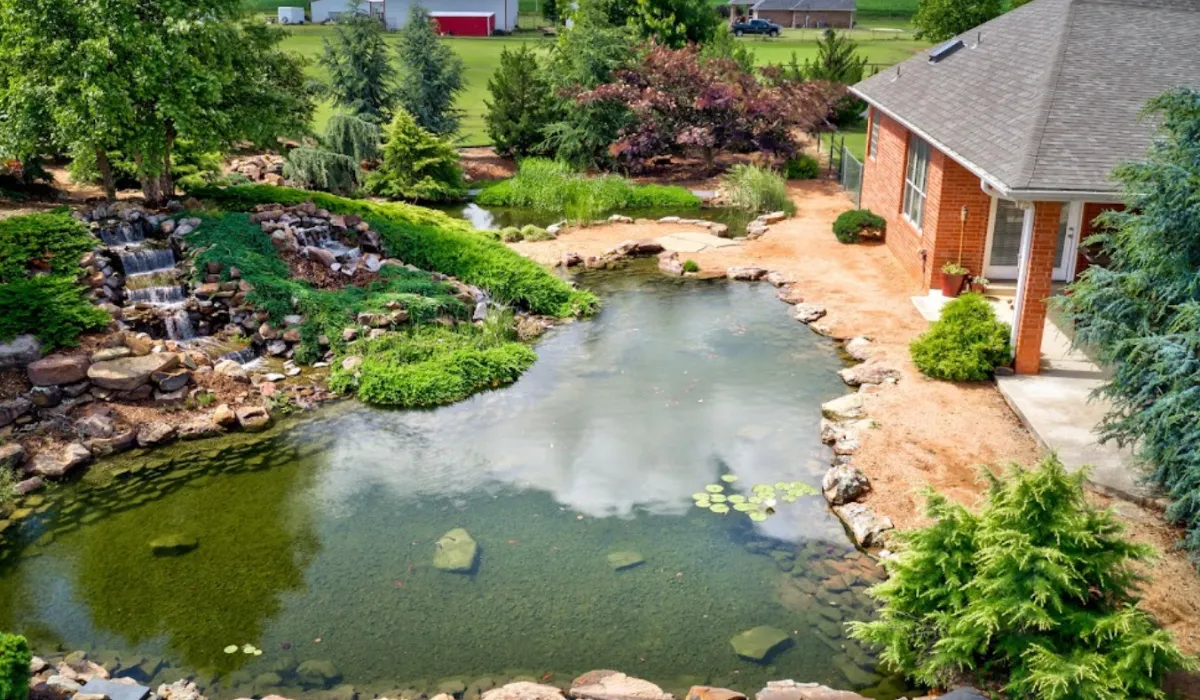Oklahoma’s Largest Selection of
Healthy Aquatic Plants for Your Pond
Transform your pond into a thriving aquatic oasis with our wide selection of healthy aquatic plants at Garden Ponds Unlimited®. Whether you’re looking to enhance water quality, create a natural habitat, or simply add stunning beauty to your pond, we have everything you need.
From vibrant water lilies and water hyacinths to hardy arrowheads and cannas, we offer one of the largest collections of aquatic plants in Oklahoma, including floating, submerged, and marginal varieties.
At our store in Moore, Oklahoma, you can explore beautiful display ponds showcasing our aquatic plants in their natural settings. Our knowledgeable staff is here to help you choose the perfect plants for your pond and provide expert advice on planting, care, and maintenance. Let us help you create a pond that’s not only visually stunning but also supports a healthy, balanced ecosystem.

Need Aquatic Plants For Your Pond?
We have the largest selection (over 75 varieties) of healthy pond plants in Oklahoma
How To Choose The Right Plants For Your Pond
With so many aquatic plants to choose from, selecting the right ones for your Oklahoma pond or water feature can feel overwhelming. The key is to consider your pond’s specific conditions, goals, and maintenance preferences. Here’s a guide to help you make informed decisions and create a beautiful, balanced ecosystem.
1. Understand the Different Types of Aquatic Plants
Aquatic plants fall into three main categories, each playing a unique role in your pond’s ecosystem:
-
-
-
- Floating Plants: These plants, such as water hyacinths, water lettuce, and duckweed, float on the surface and provide shade, helping to control algae growth and stabilize water temperature. They are perfect for ponds that get a lot of direct sunlight.
- Submerged Plants: Also known as oxygenators, plants like American pondweed and spike rush grow entirely underwater. They release oxygen into the water, improving its quality and supporting fish health.
- Marginal Plants: These plants, including iris, cannas, and arrowheads, grow around the edges of your pond, adding height and texture to the landscape. They also filter nutrients from the water, reducing algae growth.
-
-
2. Assess Your Pond’s Conditions
-
-
-
- Size and Depth: Larger ponds can accommodate a greater variety of plants, while smaller ponds may require more compact species. Depth is also critical, as some plants thrive in shallow water while others need deeper areas.
- Sunlight Exposure: Determine how much sunlight your pond receives. Floating plants are ideal for sunny ponds, while shaded ponds may require shade-tolerant species.
- Fish Presence: If you have koi or goldfish, select hardy plants that can withstand nibbling and help filter fish waste.
-
-
3. Define Your Goals
-
-
-
- Water Quality Improvement: If your primary goal is to improve water quality, prioritize submerged plants and floating plants to oxygenate the water and reduce excess nutrients.
- Aesthetic Appeal: For vibrant color and visual interest, consider adding water lilies for their striking blooms or marginal plants like iris and cannas for texture.
- Wildlife Habitat: To attract birds, butterflies, and beneficial insects, choose plants like arrowheads and pickerelweed that create a natural habitat.
-
-
4. Plan for Maintenance
While aquatic plants enhance your pond, they also require care. Choose low-maintenance plants like water lettuce or iris if you prefer minimal upkeep. For Oklahoma’s warm climate, consider plants that can thrive during hot summers and tolerate seasonal changes.
5. Seek Expert Advice
At Garden Ponds Unlimited, we understand that every pond is unique. Our knowledgeable staff can guide you through our extensive selection of aquatic plants and help you choose species that suit your pond’s size, sunlight, and ecosystem needs. Whether you’re creating a new pond or enhancing an existing one, we’ll provide the advice you need to keep your aquatic plants healthy and thriving.
Let us help you turn your pond into a stunning, balanced oasis with the perfect mix of aquatic plants!

